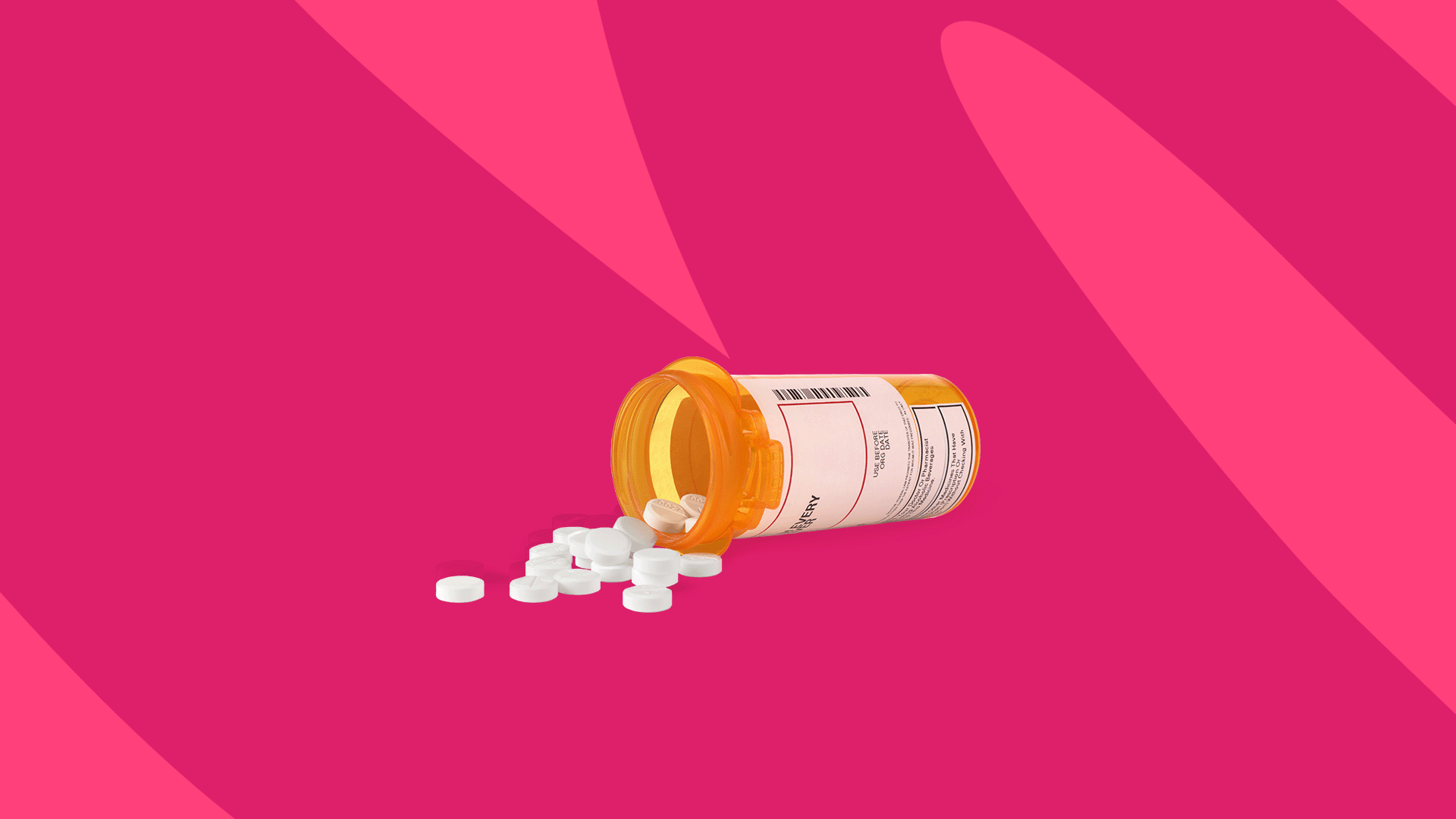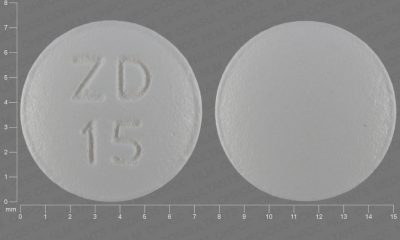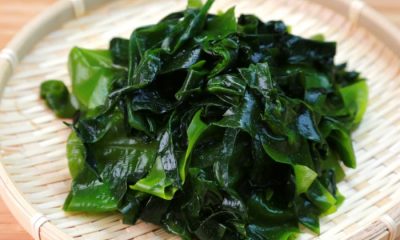Health
16 Benefits of Taurine and side effects

Discover the 16 Benefits of Taurine and side effects.
Taurine is a semi-essential organic compound. Although scientists have known it for more than two centuries; The health benefits of taurine have recently become clear.
A diet rich in taurine can protect the body and promote longevity.
Taurine supplements are non-toxic, cheap, and freely available. Read on to understand why you should consider taurine supplementation and not believe its bad reputation.
Benefits of Taurine
Taurine supplements are recommended for some people, depending on their specific health goals and medical conditions, but it’s important to understand the details of dosage and potential effects.
The most impressive taurine benefits include the following:
•Treatment of Parkinson’s disease
•Improving athletic performance
•Preventing heart disease
•Reducing the risk of diabetes
•Weightloss
•Preventing metabolic syndrome
•Reduce periodontal disease
•Improving muscle growth
1.- Antioxidants
Tissues exposed to oxidative damage have particularly high concentrations of taurine. Like other antioxidants, taurine benefits by directly and indirectly removing harmful oxidants to minimize tissue damage.
Through its antioxidant and anti-inflammatory activities, taurine can protect our bodies from unnecessary cell death and tissue damage.
2.- Reduce inflammation
The antioxidant action of taurine benefits produces taurine chloramine (Taul) and bromine (TauBr), which also have anti-inflammatory properties.
Taurine supplementation enhances the formation of TauCl and TauBr in the body and may be effective in treating inflammatory conditions.
Taurine is very effective in treating acute inflammation (caused by infection, irritants, damaged cells, or cancer). However, its role in the progression of inflammatory diseases (such as arthritis) is less clear.
Decreased Taul generation in the body can worsen inflammation-related joint damage in rheumatoid arthritis.
Taul injections improved arthritis symptoms in various experimental animal models.
The gene for the taurine transporter (TauT) has also been linked to the inflammatory response.
3.- Fight infections
The antimicrobial effects of taurine benefits in the body come from taurine chloramine (Taul) and taurine bromine (TauBr) formation.
Taul and TauBr are capable of killing a wide spectrum of bacteria, fungi (yeasts and molds), viruses, and parasites.
Both Taul and TauBr are promising treatments for infections such as chronic sinusitis, otitis media (swimmer’s ear), acne vulgaris, and gum disease.
Taul and TauBr break down quickly in our bodies and are only effective if used topically, not supplemented. However, taurine supplementation can increase the production of these compounds in our bodies.
Taurine’s role as an antioxidant is also important for the protection of the cells of our immune system.
Taurolidine, another taurine derivative, is commonly used in Europe and the US to help treat various infections.
The white blood cells (neutrophils) of rats supplemented with taurine have an increased ability to destroy invading bacteria.
4.-Help fight cancer
Taurolidine, a taurine derivative that is converted to taurine within the body, increased cancer survival rates in animal models; it also blocked the growth of colorectal cancer in rats.
Cancer patients have reduced levels of taurine. Surgery and chemotherapy further lower taurine levels and can reduce taurine in cancer patients. Therefore, taurine supplementation can be very beneficial for cancer patients.
5.-Treat diabetes
Antioxidants, such as taurine, are low in diabetic individuals. This increases the risk of oxidative damage; diabetes decreases the body’s ability to absorb taurine.
Diabetic complications, such as heart, kidney, and nerve damage, can be attributed to high oxidative damage as a result of low taurine levels.
In a study of 39 types 1 diabetic patient, oral supplementation with 500 mg of taurine three times daily for 3 months restored blood taurine levels. Taurine supplementation also prevented blood cells from clotting, lowering the risk of a heart attack.
In rats, taurine also lowers blood glucose by interacting with insulin receptors on cells.
The role of taurine benefits in protecting the kidneys from damage in diabetes is well documented in animal models and human cells.
One and a half grams of taurine daily for two weeks improved early cardiac abnormalities in a study (DB-RCT) of nine types of diabetic patients.
6.-Protects the heart
Cells of the heart and blood vessels contain the taurine transporter, suggesting that the benefits of taurine are important for heart function.
Heart disease induced by taurine-deficient diet in various animal studies.
The risk of chronic heart disease is lower in individuals with a high urinary production of taurine.
In a study of 22 healthy middle-aged women, 3 g of taurine supplements daily for 4 weeks lowered homocysteine levels. Since homocysteine correlates with heart disease, taurine may help prevent heart attacks or high cholesterol.
Taurine can also prevent abnormal heartbeats (AFib)
Taurine supplementation is effective in treating the hardening and narrowing of blood arteries in animals.
Although more research is needed, the positive effects of taurine’s benefits on the heart are thought to:
•Improves fat profile
•Helps control calcium ion uptake and thus cell excitation
•Acts as an antioxidant
•Prevents contraction of blood vessels
7.- Prevents hypertension
Taurine can increase the production of endorphins by the brain (hypothalamus). This calms the brain’s fight or flight response, which is overactive during stress, and lowers blood pressure.
Low levels of taurine are associated with increased blood pressure.
Oral taurine supplementation is potentially a very safe and convenient regimen for the control of high blood pressure.
Consumption of 3g of taurine per day for 2 months in hypertensive patients reduced both systolic and diastolic blood pressure.
It also plays a protective role in the heart and kidneys in rats with hypertension.
8.- Reduces cholesterol
Taurine supplementation can improve bile secretion and activity and improve the body’s breakdown of cholesterol.
It is also essential for the formation of bile salts and as such plays an important role in the absorption and breakdown of fats and cholesterol.
Additionally, taurine can lower blood and liver cholesterol levels in animals fed a high-fat diet.
9.-Protects the liver
Taurine supplementation in the diet at doses greater than 500 mg daily for 3 months reduced liver injury in 24 patients with chronic hepatitis.
In rats, dietary taurine protected their livers from damage related to heavy metals and oxidized fat.
Taurine availability in the body is low in various forms of liver cirrhosis. In 35 patients with liver cirrhosis, daily taurine supplementation increased taurine levels and also reduced painful muscle cramps that are associated with cirrhosis.
In animal models, taurine is effective in preventing non-alcoholic fatty liver disease. It reduced oxidative stress, cell death, and fat accumulation in the liver.
Taurine supplementation also prevented alcoholic fatty liver disease in animals by decreasing alcohol-induced oxidative stress and inflammation. It also increased the production of proteins associated with the breakdown of fats in the liver.
Animal studies suggest that taurine prevents long-term liver damage and helps liver cells recover more quickly from fatty and alcoholic liver disease.
10.- Parkinson’s disease
Research has shown that when people have adequate or high levels of taurine in their system, neuronal cell regrowth is possible, which may help reverse or mitigate the effects of certain neurodegenerative diseases, such as Parkinson’s disease.
11.- Weight loss
Lowering fat levels in the bloodstream and helping the body deal with excess blood glucose are two of the best benefits of taurine; therefore, they can help optimize the process of weight loss and fat burning.
12.- Athletic performance
This organic compound has become a very popular training supplement as it is known to allow muscles to work longer, safer, and more efficiently, which means your workouts will have better results and your recovery time will be faster. shorter.
13.- Immune function
Having adequate levels of taurine in your body can help your immune system regulate its actions, meaning your body is less likely to experience allergic reactions and other unnecessary energy expenditure.
14.- Muscle development
Taurine benefits are known to aid in skeletal muscle differentiation, and later in life, having adequate levels can help you grow and strengthen your muscles more effectively, making it a popular additive for bodybuilders and powerlifters. dumbbells.
15.- Protects vision
Taurine benefits protect retinal cells from damage caused by oxidants and bright light; In a study (DB-CT) of 62 patients, a combination of taurine, diltiazem, and vitamin E helped decrease vision loss by protecting against oxidative damage.
Low levels of taurine are associated with cataract formation in humans.
In cats, taurine deprivation causes vision loss.
In rats, the antiepileptic drug Vigabatrin depletes retinal taurine. As a result, prolonged use of this drug can lead to irreversible vision loss.
16.- It is good for lung health
The antioxidant activity benefits of taurine can protect the lungs from damage caused by exposure to toxins such as cigarette smoke.
Taurine-fed hamsters can resist lung damage caused by exposure to air pollutants.
Maintenance of tissue taurine levels is critical for the prevention of oxidant-induced lung injury in rats.
In sheep, the taurine-derived taurolidine (which is converted to taurine in the body) prevents lung damage caused by bacterial toxins.
Frequently asked questions about the benefits of taurine
-What is taurine?
Taurine (L-taurine or 2-aminoethane sulfonic acid) is a sulfur-containing amino acid.
Mammals have taurine in almost all tissues, but the heart, brain, retina, platelets, and glands contain particularly high amounts.
Taurine plays a crucial role in the development and protection of cells within mammals; controls multiple important biological processes in the body.
In this sense, taurine could be more easily compared to sodium or calcium ions than to a drug that targets a specific receptor in our body.
Humans are capable of producing taurine, but not in sufficient quantities. Therefore, taurine is a conditionally essential amino acid for humans; Some conditions in which patients may be deficient in taurine include premature infants, newborns, and patients with chronic liver, heart, and kidney disease.
This supplement is also an osmolyte. This means that it controls the entry and exit of water in the cells and prevents them from changing the cell too much; It interacts with fats in cell membranes and stabilizes them, preventing structural changes in the cell.
Despite the impressive range of positive effects that taurine has on the body, its exact mechanisms of action remain largely unknown.
-How does the body produce taurine?
Taurine is synthesized in the body from the only other two sulfur-containing amino acids, methionine and cysteine.
Taurine synthesis occurs primarily in the liver, with the help of the enzyme cysteine sulfinic acid and vitamin B6 (pyridoxine).
Other cells in our body can absorb taurine from the blood thanks to the special taurine transporter molecule (TauT) found in cell membranes.
Taurine is an essential nutrient for newborns as they are not yet able to synthesize or retain taurine within their bodies. Breast milk contains the full taurine requirement for infants, as does modern infant formula.
-How does the body eliminate taurine?
Taurine leaves the body as part of the bile or urine.
The kidneys can increase or decrease taurine excretion depending on the dietary availability of taurine. High amounts of taurine in urine indicate high dietary intake.
Taurine carrier molecules in the kidneys use energy to reabsorb and retain taurine in the body.
People with compromised kidney function or defective taurine transporters may not be able to retain sufficient amounts of taurine.
Taurine Side Effects
Taurine remains one of the most important organic compounds within the body, but there are some potential side effects when consuming too much, such as pregnancy complications and worsening of certain nervous system disorders.
Bipolar Disorder: Studies have found that regular or prolonged use of this compound can worsen the symptoms of bipolar disorder, although, in moderate amounts, it may have a mitigating effect on this condition.
Pregnancy: Some of the more popular taurine supplements also contain other active ingredients, including caffeine, that may pose a risk to pregnant or lactating women, so these individuals should avoid the use of this non-essential amino acid.
Dosage
Up to 3 g of supplemental taurine per day is safe for consumption in adults. There is strong evidence that there are no side effects at doses up to and below this value. Scientists do not recommend a dose greater than 3 g per day.
Relatively high amounts of taurine are safe for consumption because any excess can be passed harmlessly through urine.
Health
Benefits of bay leaves and side effects

Table of Contents
Health
Serious side effects of metoprolol

- Discover the serious side effects of metoprolol.
- How does this medication work? What are its effects?
- Metoprolol belongs to the class of medications called beta-blockers. Metoprolol is used to treat high blood pressure and prevent symptoms of certain types of angina ( chest pain). It is also used to reduce the risk of death immediately after a heart attack. It works by reducing the needs of the heart during exercise.
- People who have had a heart attack take metoprolol to avoid having another heart attack. Metoprolol is often used in combination with other drugs that lower high blood pressure, such as diuretics (pills that increase urine output), when just one agent is not enough to control blood pressure.
- This medicine is available under various brand names or in different formulations, or both. A specific brand of this medication may not be available in all forms and may not have been approved for all of the conditions discussed here. Also, some forms of this medicine may not be used for all of the conditions mentioned in this article.
- Your doctor may have suggested this medication for a condition that is not listed in this Medication Information article. If you have not yet discussed this with your doctor, or if you are not sure why you are taking this medicine, consult your doctor. Do not stop taking this medicine without consulting your doctor first.
- Do not give this medicine to anyone, even someone who has the same symptoms as yours. This medicine could harm people for whom it was not prescribed.
- What forms does this medication come in?
- Apo-Metoprolol
- 25 mg
- Each white, oval, scored tablet, engraved “ME” over “25” on one side and “APO” on the other, contains 25 mg of metoprolol tartrate. Nonmedicinal ingredients: colloidal silica dioxide, croscarmellose sodium, lactose monohydrate, magnesium stearate, and microcrystalline cellulose.
- 50 mg
- Each white, round, scored tablet, engraved “APO” over “M50”, contains 50 mg of metoprolol tartrate. Nonmedicinal ingredients: colloidal silica dioxide, croscarmellose sodium, lactose, magnesium stearate, and microcrystalline cellulose.
- 100 mg
- Each white, round, scored tablet, debossed with “APO” over “M100”, contains 100 mg of metoprolol tartrate. Nonmedicinal ingredients: colloidal silica dioxide, croscarmellose sodium, lactose, magnesium stearate, and microcrystalline cellulose.
- Apo-Metoprolol (Type L)
- 50 mg
- Each pink, capsule-shaped, coated tablet, scored on one side and engraved “50” on the other, contains 50 mg of metoprolol. Nonmedicinal ingredients: carnauba wax, colloidal silica dioxide, croscarmellose sodium, D&C aluminum lake red No. 30, sun yellow aluminum lake, hydroxypropyl methylcellulose, lactose, magnesium stearate, microcrystalline cellulose, polyethylene glycol 3350, and sodium dioxide. titanium.
- 100 mg
- Each blue, capsule-shaped, coated tablet, scored on one side and engraved “100” on the other, contains 100 mg of metoprolol. Nonmedicinal ingredients: carnauba wax, colloidal silica dioxide, croscarmellose sodium, hydroxypropylmethylcellulose, indigotin aluminum lake (AD & C blue # 2), lactose, magnesium stearate, microcrystalline cellulose, polydextrose, polyethylene glycol 3350, and titanium dioxide.
- How should this medication be used?
- The usual maintenance dose of metoprolol ranges from 100 mg to 200 mg per day, however, this dose may be increased to 400 mg per day as needed to achieve symptom control. Immediate-release tablets are taken in 2 divided doses while slow-release tablets are taken once a day.
- This medication should be taken soon after a meal, but try to take it at the same time every day.
- Several factors can be taken into account in determining the dose a person needs: their weight, their health, and whether they are taking other medications. If your doctor has recommended a dose other than those listed here, do not change the way you are taking the medicine without consulting your doctor.
- This medicine must be taken exactly as your doctor has told you. If you miss a dose, take the medicine as soon as you notice the missed dose and resume treatment as soon as possible. If it is almost time for your next dose, skip the missed dose and go back to your usual dosing schedule. Do not use a double dose to make up for a missed dose. If you are unsure of what to do after missing a dose, ask your doctor or pharmacist for advice.
- Store this medication at room temperature, protect it from light and moisture, and keep it out of the reach of children.
- Do not dispose of medicines in the wastewater (eg not in the sink or in the toilet bowl) or with the household garbage. Ask your pharmacist how to dispose of unused or expired medicines.
- In which cases is this medication not recommended?
- Do not use this medicine under the following circumstances:
- a condition such as right ventricular failure caused by high blood pressure in the lungs;
- is allergic to metoprolol or any of the ingredients of the medication
- are allergic to other beta-blockers;
- anesthesia caused by an agent having a depressant effect on the myocardium (eg ether);
- a history of heart attack accompanied by:
- a heart rate of fewer than 45 beats per minute,
- severe heart block
- very low blood pressure
- moderate or severe heart failure.
- slow heartbeat caused by problems with the heart rhythm;
- severe heart block;
- cardiogenic shock;
- significant circulatory disorders;
- proven heart failure;
- the presence of asthma or other obstructive airway conditions (only when it comes to metoprolol in intravenous form);
- a disorder referred to as “sinus dysfunction syndrome”;
- have untreated pheochromocytoma (a tumor of the adrenal glands).
- What are the possible side effects of metoprolol
- Many medications can cause side effects. A side effect is an unwanted response to a drug when taken in normal doses. It can be mild or severe, temporary or permanent. The side effects listed below are not experienced by everyone who takes this medication. If you are concerned about side effects, discuss the risks and benefits of this medication with your doctor.
- At least 1% of people taking this medicine reported the following side effects. Many of these side effects can be managed and a few may go away on their own over time.
- Consult your doctor if you experience these side effects and if they are serious or bothersome. Your pharmacist may be able to give you advice on what to do if these side effects appear:
- changes in libido or sexual ability;
- constipation;
- diarrhea;
- pain or discomfort in the abdomen;
- dizziness or light-headedness when changing from sitting or lying down to standin
- fatigue or unusual weakness brought on by activity;
- fatigue;
- headaches;
- nausea;
- hair loss;
- weight gain;
- dreams giving a powerful sensation;
- dry mouth;
- increased sensitivity of the skin to solar radiation;
- increased sweating;
- sleep disturbances;
- vomitings.
- Most of the side effects listed below do not happen very often, but they could cause serious problems if you do not see your doctor or receive medical attention.
- Check with your doctor as soon as possible if any of the following side effects occur:
- slow heartbeat (especially less than 40 beats per minute);
- hearing changes;
- confusion;
- difficulty breathing or wheezing;
- back or joint pain;
- chest pain;
- hallucinations (the perception of phenomena that do not exist);
- tingling in the arms and legs.
- a feeling of coldness in the hands and feet;
- signs of depression (eg, lack of concentration, weight fluctuations, trouble sleeping, indifference to many activities, thoughts of suicide);
- signs of certain heart problems (e.g., increased or irregular heartbeat or pulse, chest pain, difficulty breathing, excessive fatigue, swelling of the feet, ankles, or part lower legs);
- signs of certain kidney problems (eg increased or reduced urine production, itching, nausea, vomiting, rash);
- signs of a bleeding disorder (e.g. unusual nosebleeds, bruising, blood in urine, cough with bloody sputum, bleeding gums, cuts that keep bleeding) ;
- signs of liver problems (eg, nausea, vomiting, diarrhea, loss of appetite, weight loss, yellowing of the skin or whites of the eyes, dark urine, pale stools );
- a flare-up of psoriasis (eg, red spots the size of a pinhead on the skin; red, scaly, or crusty skin);
- a feeling of numbness or tingling in the extremities;
- symptoms of low blood pressure (eg, dizziness, fatigue);
- vision changes (eg blurred vision, dry eye, eye pain).
- Stop taking the drug and seek immediate medical attention if there is a response such as :
- coldness, discoloration, or pain in the fingers or toes;
- symptoms of a serious allergic reaction (such as swelling of the face or swelling of the throat, hives, or difficulty breathing).
- Some people may experience side effects other than those listed. See your doctor if you notice any symptom that worries you while you are using this medicine.
- Are there other precautions or warnings?
- Before using any medication, be sure to tell your doctor about any medical conditions or allergies you may have, the medications you are using, and any other important facts about your health. Women should mention if they are pregnant or breastfeeding. These factors could influence how you should use this medicine.
- Respiratory disorders: In general, people with asthma, and certain other lung problems, should generally avoid taking beta-blockers such as metoprolol, as they can cause breathing difficulties. If you have breathing problems, and your doctor has prescribed metoprolol for you, it is probably in lower doses, and they will monitor you regularly while you are using this medicine. If you have breathing problems, talk to your doctor about how this medicine may affect your condition, how your condition affects the administration and effectiveness of this medicine, and whether medical supervision is needed. specific.
- Severe allergies: If you have allergies severe enough to cause anaphylaxis (a severe allergic reaction in which swelling of the face, lips, and throat makes it very difficult to breathe), talk to your doctor about what to do next. take if you have an allergic reaction. the use of metoprolol may make it more difficult to treat severe allergic reactions with epinephrine.
- Stopping the drug: People with heart disease who suddenly stop taking this drug may experience chest pain, irregular heartbeat, or a heart attack. If you have heart disease, do not stop taking this medication without consulting your doctor first. When this medication is to be stopped, it should be done gradually, under the supervision of your doctor.
- Diabetes: The signs associated with low blood sugar may be more difficult to see while you are taking metoprolol. People with diabetes may have a harder time regulating their blood sugar levels when taking this medicine. If you have diabetes, discuss with your doctor how this medication may affect your condition, how your condition affects the administration and effectiveness of this medicine, and whether medical supervision is needed. specific. You will be kept under medical supervision while taking this medicine and your doctor may need to adjust your doses of diabetes medicine.
- Dizziness or syncope: Metoprolol may cause side effects, including dizziness or fainting, soon after starting treatment. Do not drive a vehicle or do other potentially dangerous tasks until you know how this medicine works for you.
- Hyperthyroidism (high level of thyroid hormones): Metoprolol may mask the symptoms of a person with hyperthyroidism (high level of thyroid hormones).
- If you have hyperthyroidism, discuss with your doctor how this medication may affect your condition, how your condition affects the administration and effectiveness of this medicine, and whether it is appropriate to have it. specific medical surveillance. Stopping the medication suddenly could make this condition worse.
- Liver function: Liver disease or reduced liver function can cause this drug to build up in the body, causing side effects. If you have liver problems, talk to your doctor about how this medicine may affect your condition, how your condition affects the administration and effectiveness of this medicine, and whether medical supervision is needed. specific. Your doctor will monitor your liver function with regular blood tests while you are taking this medicine.
- If you notice symptoms of liver problems such as fatigue, feeling unwell, loss of appetite, nausea, yellowing of the skin or whites of the eyes, dark urine, pale stools, abdominal pain, or swelling and itching of the skin, contact your doctor immediately.
- Kidney function: Taking metoprolol may affect kidney function. Your doctor will take this into account in his monitoring and will adjust your dose as needed. If you have reduced kidney function or kidney disease, talk to your doctor about how this medicine may affect your condition, how your condition affects the administration, and how well this medicine works. , and the relevance of specific medical surveillance. If you notice swelling in your hands, feet, or face, an increase in your blood pressure, unusual muscle cramps, or a dark appearance of your urine, this medicine may be interfering with the proper function of your blood. kidneys.
- If you notice any of these symptoms, contact your doctor as soon as possible.
- Heart disease: Beta-blockers like metoprolol can worsen already present heart failure. It is essential to use metoprolol as prescribed by your doctor to reduce this risk. If you have a history of heart disease, discuss with your doctor how this medication may affect your condition, how your condition affects the administration and effectiveness of this medicine, and whether it is appropriate to use it. specific medical surveillance.
- Pheochromocytoma: This medicine may worsen the symptoms of pheochromocytoma (a tumor of the adrenal gland) if taken alone Talk to your doctor about how this medicine might affect your condition, how your condition affects your condition. administration and efficacy of this medicinal product, and the relevance of specific medical supervision.
- Surgery: If you are about to have surgery, tell all healthcare professionals who treat you that you are using metoprolol.
- Pregnancy: This medication should not be used during pregnancy unless the benefits outweigh the risks. If pregnancy occurs while you are using this medicine, contact your doctor immediately.
- Breast-feeding: This medicine passes into breast milk. If you use metoprolol while you are breastfeeding your baby may feel the effects. Check with your doctor to see if you should continue breastfeeding.
- Children: The safety and effectiveness of this medicine have not been established in children
- Seniors: Normal doses of metoprolol for adults may lower blood pressure more than expected. Lower doses may be necessary for the elderly.
- Can other agents interact with this medication?
- There may be an interaction between metoprolol and any of the following:
- abiraterone acetate;
- acetylcholine;
- anesthetic agents;
- alpha agonists (eg, clonidine, methyldopa);
- alcohol;
- aldesleukin;
- aliskiren;
- alpha1-blockers (eg doxazosin, prazosin, tamsulosin);
- amifostine;
- amiodarone;
- amphetamines (eg, dextroamphetamine, lisdexamfetamine);
- serotonin antagonists (antiemetic drugs; eg dolasetron, granisetron, ondansetron);
- tricyclic antidepressants (eg amitriptyline, clomipramine, desipramine, trimipramine);
- antihistamines (eg, cetirizine, doxylamine, diphenhydramine, hydroxyzine, loratadine, diphenhydramine);
- nonsteroidal anti-inflammatory drugs (NSAIDs) eg. ibuprofen, indomethacin, naproxen);
- antimalarials (e.g. chloroquine, hydroxychloroquine, mefloquine, quinine);
- antipsychotics (eg, chlorpromazine, clozapine, haloperidol, olanzapine, quetiapine, risperidone);
- asunaprevir;
- atomoxetine;
- other beta-blockers (eg, atenolol, pindolol, propranolol);
- azelastine;
- barbiturates (eg, butalbital, pentobarbital, phenobarbital);
- beta-agonists (anti-asthma medicines, eg salbutamol, salmeterol, formoterol);
- calcium channel blockers (eg, verapamil, diltiazem, nifedipine, amlodipine);
- angiotensin II receptor blockers (ARBs) eg. irbesartan, losartan);
- bortezomib;
- brimonidine;
- buprenorphine;
- bupropion;
- celecoxib;
- ceritinib;
- milk thistle;
- cholecalciferol;
- cimetidine;
- cinacalcet;
- clobazam;
- clotrimazole;
- cobicistat;
- cocaine;
- cyproterone;
- darifenacin;
- delavirdine;
- rye ergot derivatives (eg bromocriptine, ergotamine, methylergonovine);
- nitro derivatives (eg nitroglycerin, isosorbide dinitrate, isosorbide mononitrate);
- dextromethorphan;
- digoxin;
- dipyridamole;
- disopyramide;
- disulfiram;
- diuretics (pills to remove water; eg furosemide, hydrochlorothiazide);
- donepezil;
- doxorubicin;
- dronedarone;
- entacapone;
- epinephrine;
- grass pollen allergen extract;
- fentanyl;
- fingolimod;
- flecainide;
- floctafenine;
- galantamine;
- ginger;
- ginseng;
- guanfacine;
- imatinib;
- phosphodiesterase type 5 inhibitors (eg, sildenafil, tadalafil);
- proton pump inhibitors (eg, lansoprazole, omeprazole, rabeprazole);
- Angiotensin-Converting Enzyme Inhibitors (ACEIs) eg. captopril, ramipril);
- selective serotonin reuptake inhibitors (eg fluoxetine, paroxetine, sertraline);
- selective serotonin-norepinephrine reuptake inhibitors or SNRIs (eg, desvenlafaxine, duloxetine, venlafaxine);
- insulin;
- isoniazid;
- ketoconazole;
- lacosamide;
- lanreotide;
- levodopa;
- lidocaine;
- lomustine;
- cholesterol “statin” drugs (eg pravastatin, simvastatin);
- methacholine;
- methadone;
- methimazole;
- methoxsalen;
- methylphenidate;
- metoclopramide;
- midodrine;
- mifepristone;
- mirabegron;
- moclobemide;
- nefazodone;
- nevirapine;
- nilotinib;
- noradrenaline;
- octreotide;
- orphenadrine;
- oxybutynin;
- pasireotide;
- pazopanib;
- peginterferon alfa-2b;
- pentoxifylline;
- sodium phenylbutyrate;
- pilocarpine;
- pimozide;
- praziquantel;
- propafenone;
- quinidine;
- quinine;
- ranitidine;
- regorafenib;
- rifabutin;
- rifampin;
- rituximab;
- rivastigmine;
- ropinirole;
- sulfonylureas (eg gliclazide, glyburide, tolbutamide);
- temsirolimus;
- terbinafine;
- theophyllines (eg aminophylline, oxtriphylline, theophylline);
- ticagrelor;
- ticlopidine;
- tizanidine;
- tofacitinib;
- tolcapone;
- tranylcypromine;
- yohimbine.
- If you are taking any of the above medicines, please tell your doctor or pharmacist. In your case, your doctor may ask you to:
- stop taking any of the medications;
- replace one of the drugs with another;
- change the way you take one or both of the medicines.
- do not change anything at all.
- Interference of one medicine with another does not always mean that you stop taking one of them. Ask your doctor what to do with drug interactions.
- Drugs other than those listed above may interact with this drug. Tell your doctor everything you take, whether it is prescription or over-the-counter drugs and herbal remedies. Do not forget to mention any supplements you take. If you consume caffeine, alcohol, nicotine, or street drugs, you should tell your prescribing doctor since these substances can affect the way many drugs work
Health
8 Benefits of mustard oil and side effects

Table of Contents
-

 Food5 months ago
Food5 months ago10 + Benefits of carrot juice and side effects
-

 Food5 months ago
Food5 months ago8 shocking benefits of leek juice and side effects
-

 Health5 months ago
Health5 months agoBenefits of guava leaves Sensually
-

 Health5 months ago
Health5 months ago10 shocking health benefits of Canary seed milk
-

 Health5 months ago
Health5 months ago7 health benefits of cashew leaves and side effects
-

 Health5 months ago
Health5 months ago13 shocking health benefits of Thai eggplant
-

 Weight Loss5 months ago
Weight Loss5 months agoKelly Osbourne weight loss 2022
-
Weight Loss5 months ago
Chrissy Metz Weight Loss Secret (2022)












